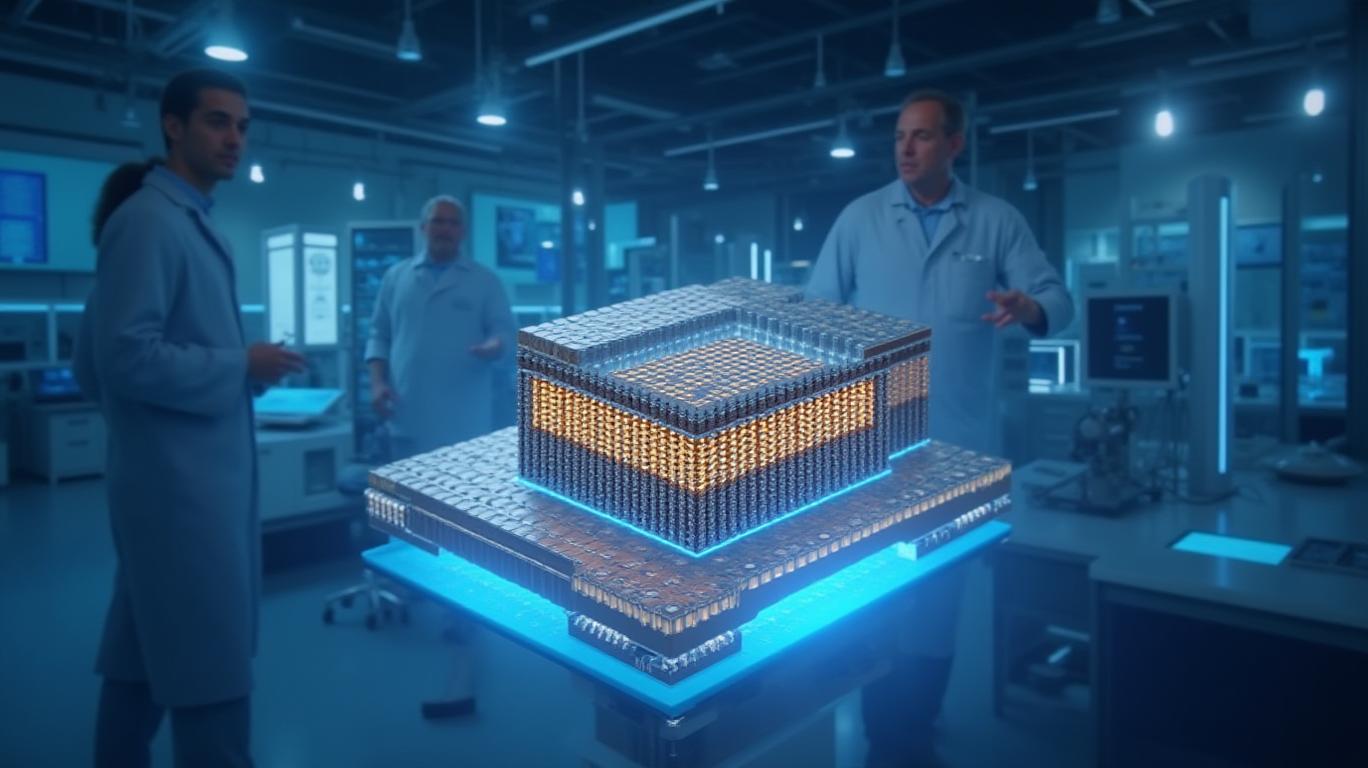SanDisk's Post-Spinoff Struggles: Loss Deepens, but Hopes Rest on NAND Innovation
SanDisk’s fiscal third-quarter results, released earlier this month, painted a stark picture of the challenges facing the standalone memory giant. Despite a revenue beat and hints of stabilization, the company’s financial performance was overshadowed by a staggering $1.93 billion GAAP loss, driven by the fallout of its separation from Western Digital (WDC). For investors, the quarter is less about the headline numbers and more about the path forward—a path fraught with industry-wide headwinds but also potential rewards from cutting-edge technology.
A Loss Masked by Strategic Costs
The quarter’s top-line decline—revenue fell 10% sequentially to $1.70 billion—was offset by a critical caveat: the GAAP loss was almost entirely due to a $1.83 billion goodwill impairment charge. This non-cash charge stemmed from the abrupt drop in SanDisk’s market capitalization post-separation on February 21, 2025, as investors reassessed its standalone prospects. Excluding such items, the non-GAAP loss narrowed to just $0.30 per share, reflecting operational resilience amid a weak memory market.
The separation’s financial gymnastics are worth noting. Pre-spinoff financials were presented as “carve-outs,” meaning historical results were retroactively adjusted to reflect
as a standalone entity. This complicates comparisons to prior periods but underscores the abrupt reality of independence: no longer shielded by WDC’s scale, SanDisk now faces scrutiny as a pure-play NAND player.Q4 Outlook: Walking the Tightrope
For the fourth quarter, management guided revenue between $1.75 billion and $1.85 billion—narrowly ahead of Q3’s $1.70 billion—and projected a potential non-GAAP profit of up to $0.15 per share. This cautious optimism hinges on two strategies: supply discipline and price hikes.
CEO David Goeckeler emphasized that SanDisk is “reducing supply to match demand,” a stark acknowledgment of the oversupply crisis that has battered the semiconductor sector. NAND prices fell roughly 10-15% in Q3 alone, per industry trackers, and SanDisk’s move to curb production could help stabilize pricing. Yet this strategy risks cutting into revenue if demand doesn’t rebound.
Equally critical is the ramp-up of BiCS 8, a next-generation 3D NAND architecture promising 50% higher density than its predecessor. The technology, developed with partner Kioxia, is positioned to dominate high-margin markets like enterprise storage and AI-driven data centers. Goeckeler called BiCS 8 a “game-changer,” but its success depends on timely manufacturing ramp and customer adoption—a process that could take quarters to materialize.

Risks Lurking in the Shadows
The path to profitability is littered with risks. The memory market remains oversupplied, with competitors like Samsung and SK Hynix also cutting output. Yet without a meaningful rebound in demand—particularly from China’s tech sector or the cloud infrastructure boom—prices could stay depressed.
Additionally, SanDisk’s reliance on Kioxia for manufacturing adds complexity. The two companies share a joint venture for NAND fabrication, meaning SanDisk’s ability to control costs and timelines is partially out of its hands. Legal and operational ties to WDC also linger, as the duo must finalize post-spinoff agreements on intellectual property and supply chain logistics.
The Bottom Line: A Bumpy Road, but a Potential Turnaround
SanDisk’s Q3 results are a mixed bag. The goodwill impairment, while painful, is a one-time hit that doesn’t reflect ongoing operations. The non-GAAP metrics suggest the core business is holding its ground, and the Q4 guidance hints at stabilization—if not a slight rebound.
Investors should focus on two key data points: NAND pricing trends and BiCS 8 adoption rates. If average selling prices stabilize or rise in Q4, and BiCS 8 gains traction in enterprise markets, SanDisk could emerge as a beneficiary of a cyclical upturn.
However, the risks are significant. The company’s stock—down roughly 30% since the spinoff—reflects skepticism about its ability to navigate these challenges alone. To justify a rebound, SanDisk must prove it can execute on its supply cuts, capitalize on BiCS 8, and weather the storm of a sluggish global economy.
For now, the jury is out. But with a market capitalization of just $4.5 billion (as of May 2025), SanDisk’s shares offer a leveraged play on a memory market recovery. For the bold, the question is whether the company’s innovation can outweigh its independence-induced growing pains.
In conclusion, SanDisk’s Q3 results are a stark reminder that the semiconductor cycle is far from over. While the separation has introduced new challenges, the company’s focus on high-density NAND and disciplined supply management could position it to capitalize on eventual demand recovery. Investors must weigh the near-term risks against the long-term potential of BiCS 8—a bet that could either make or break SanDisk’s future.

Comments
No comments yet